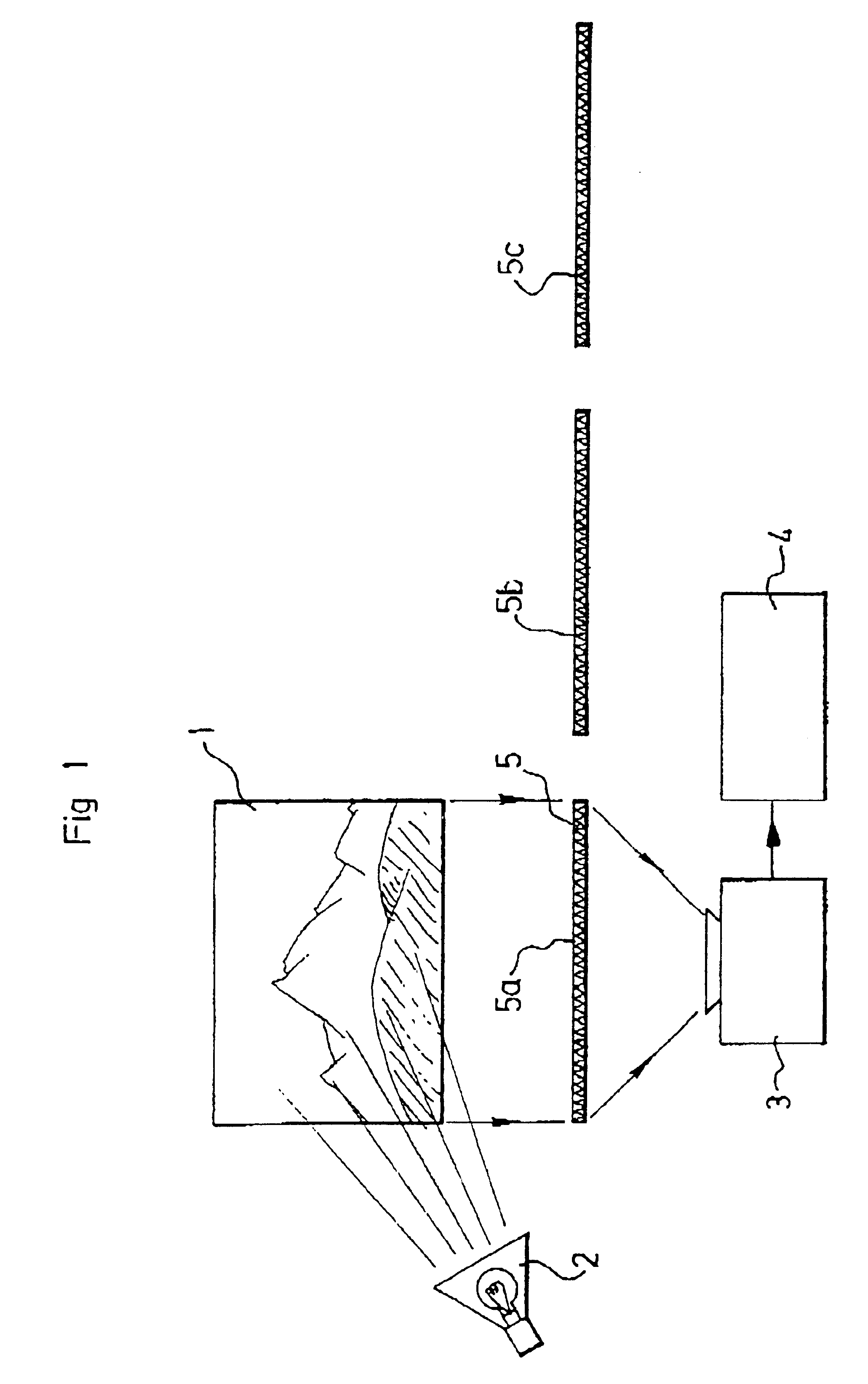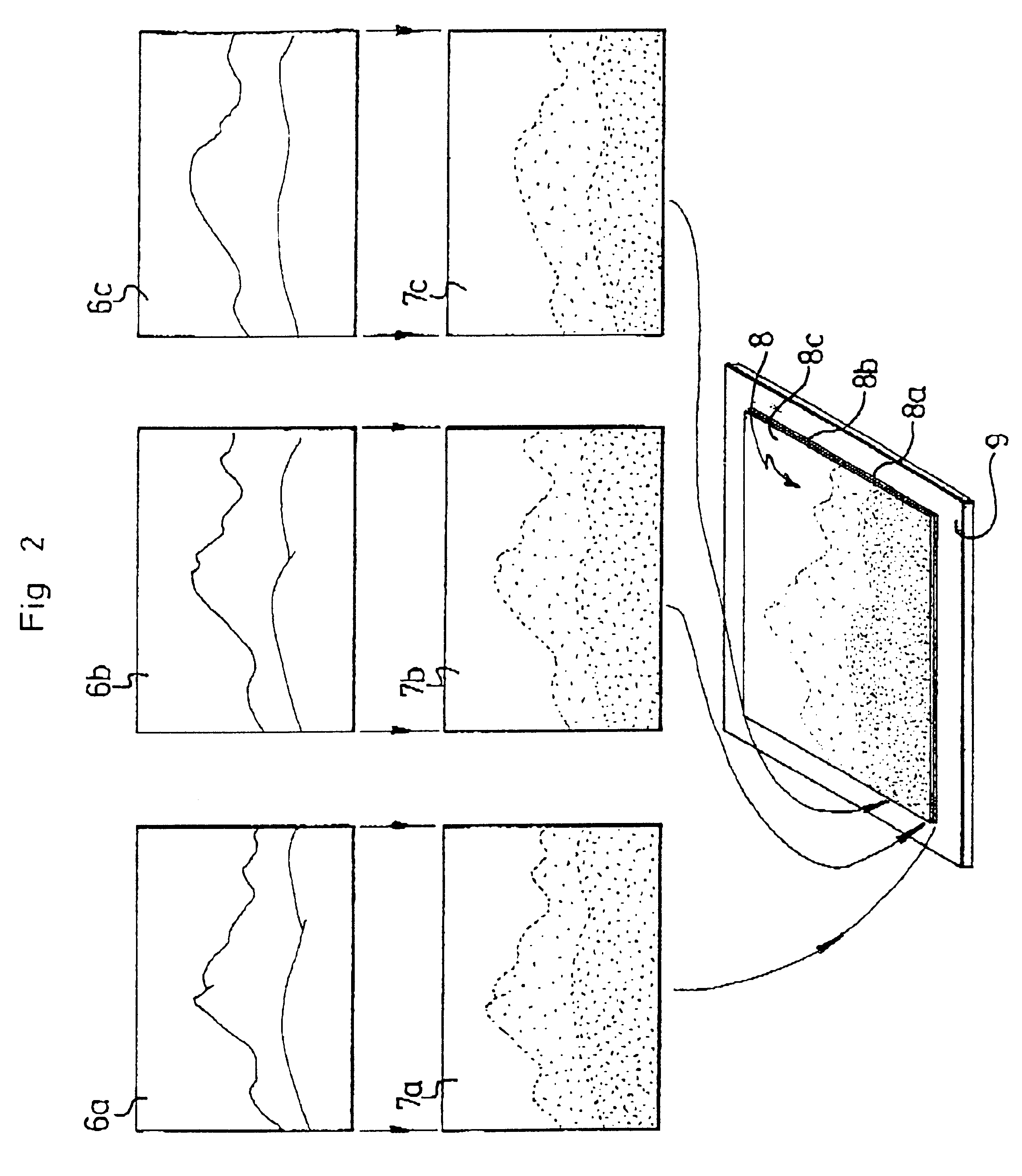Method for producing a particular photoluminescent polychromatic printed image, resulting image and uses
a printing image and photoluminescent technology, applied in the direction of printing, other printing matter, pattern printing, etc., can solve the problem of not being able to produce a photoluminescent printed polychromatic imag
- Summary
- Abstract
- Description
- Claims
- Application Information
AI Technical Summary
Benefits of technology
Problems solved by technology
Method used
Image
Examples
example 2
A quadrichrome printed landscape image in A4 format was used which was reproduced by a process according to the invention as described above on the free face of an adhesive polyurethane transparent protective film marketed by the FASVER Company (France) under the name FASPROTEK.RTM., in the corresponding format. This transparent film was then applied to an official document to be protected carrying a pre-printed text. It was observed that the film did not prevent the pre-printed text from being read. The screen-printed image formed opalescent relief portions visible under low incidence. It was not visible in visible white light. The image appeared with all its shades of colour under illumination by an ultraviolet lamp.
example 3
With the process described above, the following were printed successively onto the same white paper free from optical brightener:
a polychromatic reproduction which was photoluminescent under ultraviolet reproducing as a positive the complete continuous visible coloured spectrum, with the pigments CD329, CD308 and CD335,
a polychromatic reproduction which was photoluminescent under infrared reproducing as a negative the complete continuous visible coloured spectrum, with the pigments UC6 red, UC6 green and UC6 blue,
an infrared image reproducing as a negative the complete continuous visible coloured spectrum, with the pigment CD170.
Under illumination by a source of ultraviolet light the polychromatic image of the spectrum appeared as a positive. Under illumination by a source of infrared light the polychromatic image of the spectrum appeared as a negative. Under illumination in visible light, no image appeared which was visible in visible light. Under illumination in visible light filt...
PUM
 Login to View More
Login to View More Abstract
Description
Claims
Application Information
 Login to View More
Login to View More - R&D
- Intellectual Property
- Life Sciences
- Materials
- Tech Scout
- Unparalleled Data Quality
- Higher Quality Content
- 60% Fewer Hallucinations
Browse by: Latest US Patents, China's latest patents, Technical Efficacy Thesaurus, Application Domain, Technology Topic, Popular Technical Reports.
© 2025 PatSnap. All rights reserved.Legal|Privacy policy|Modern Slavery Act Transparency Statement|Sitemap|About US| Contact US: help@patsnap.com



